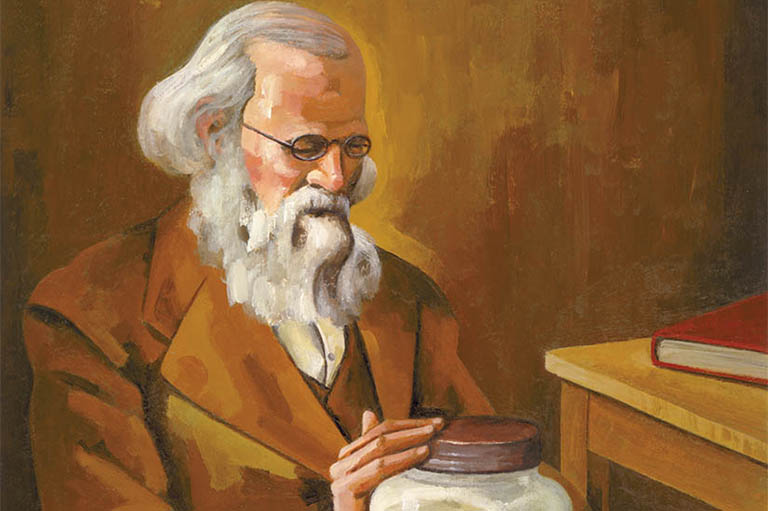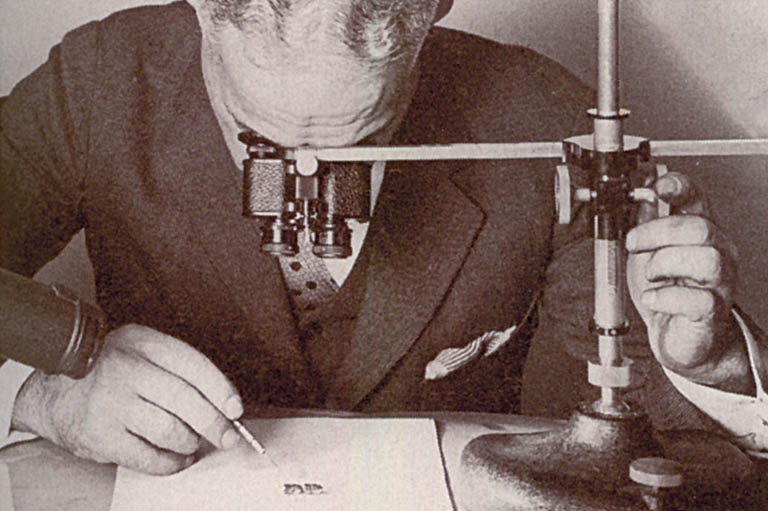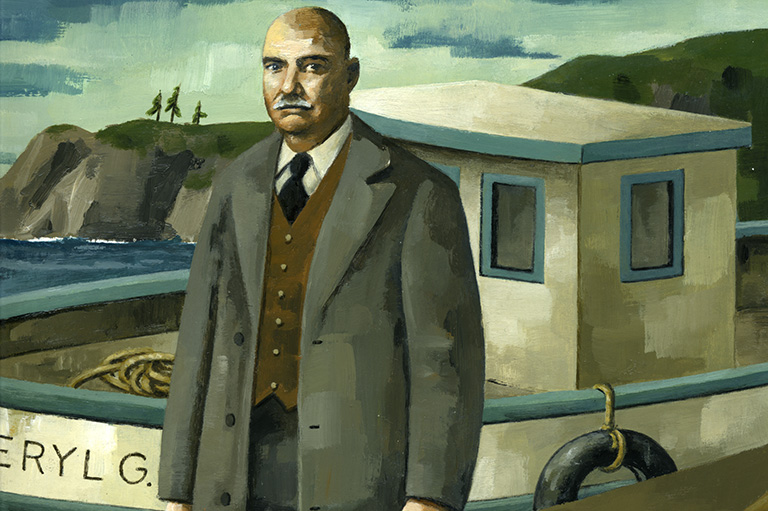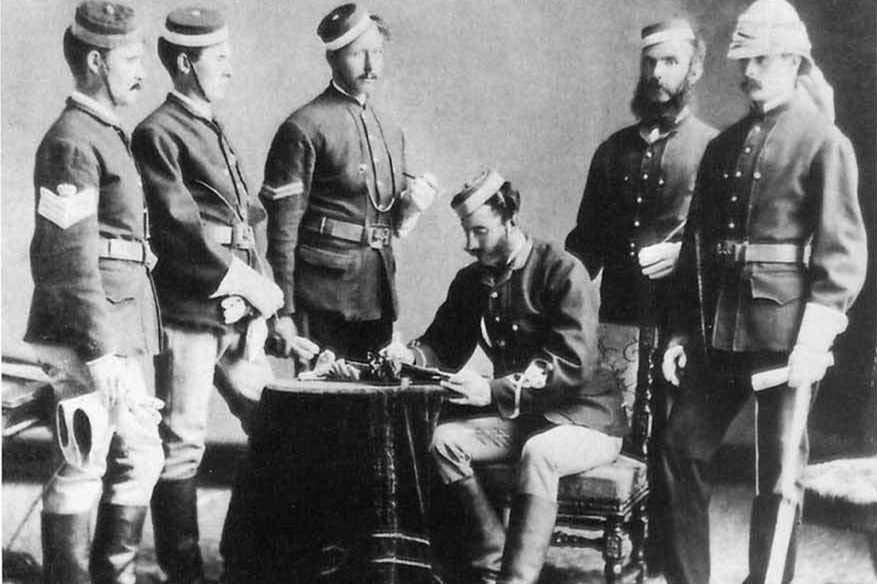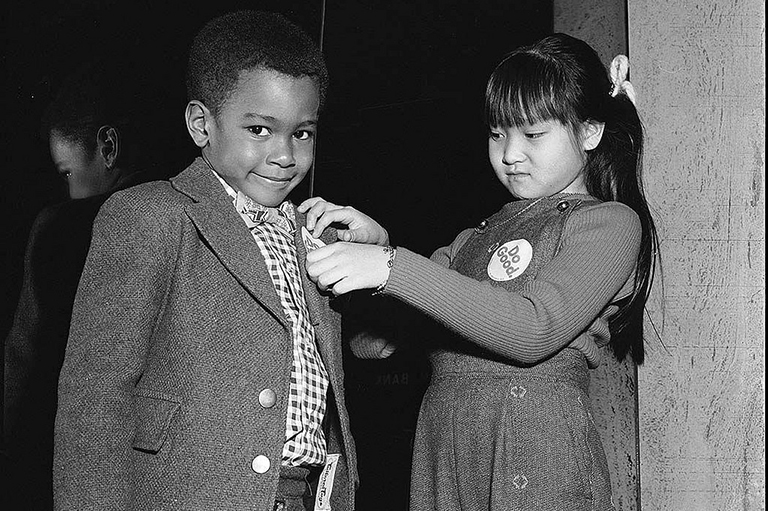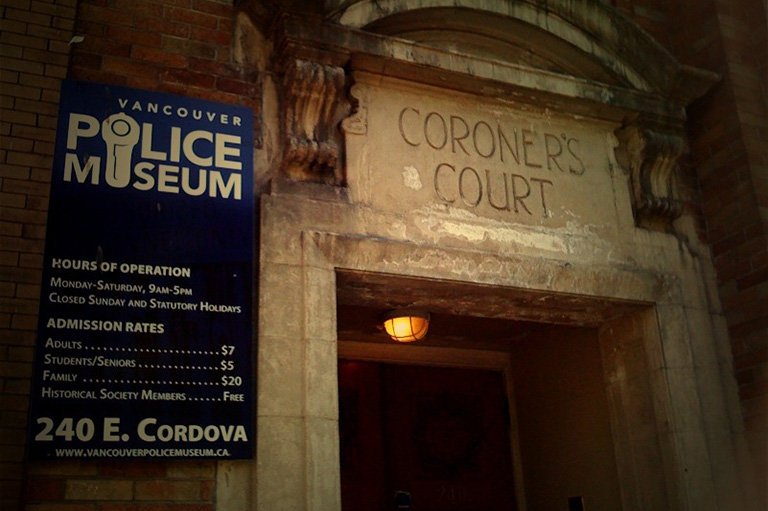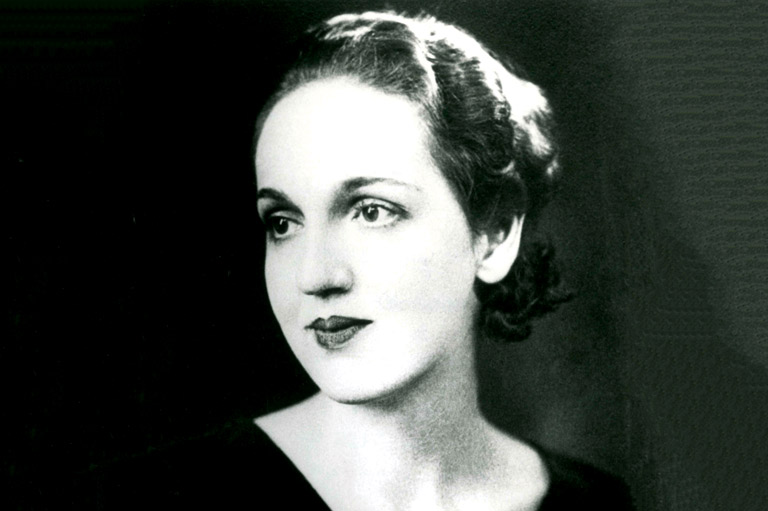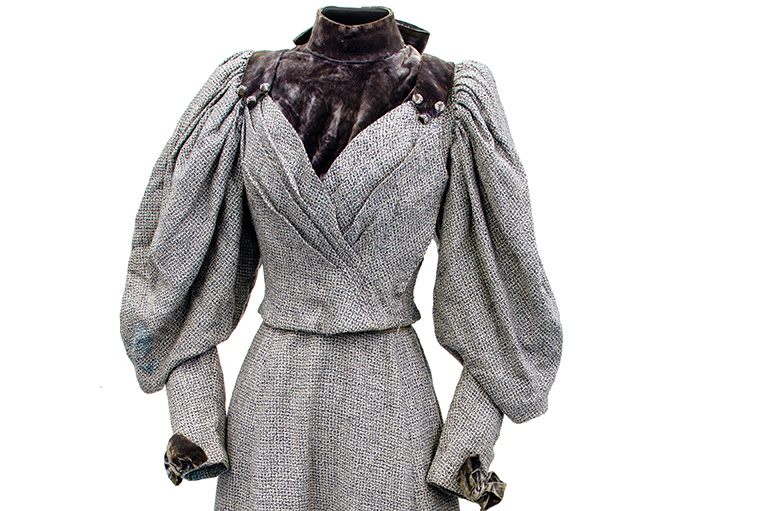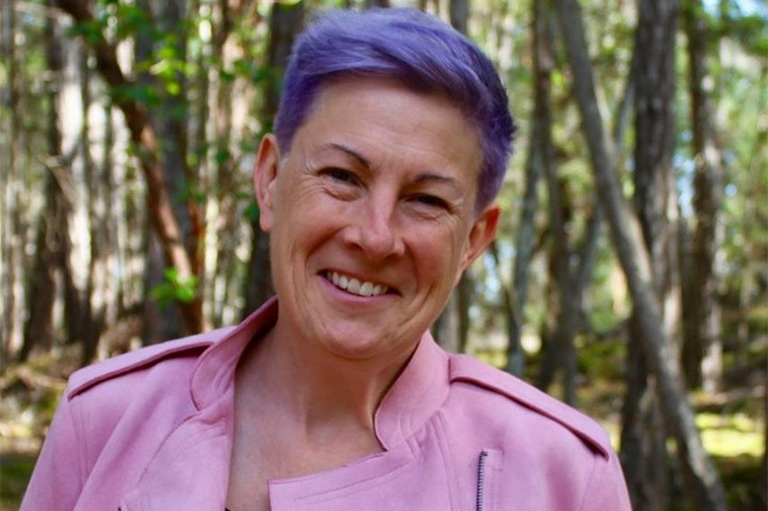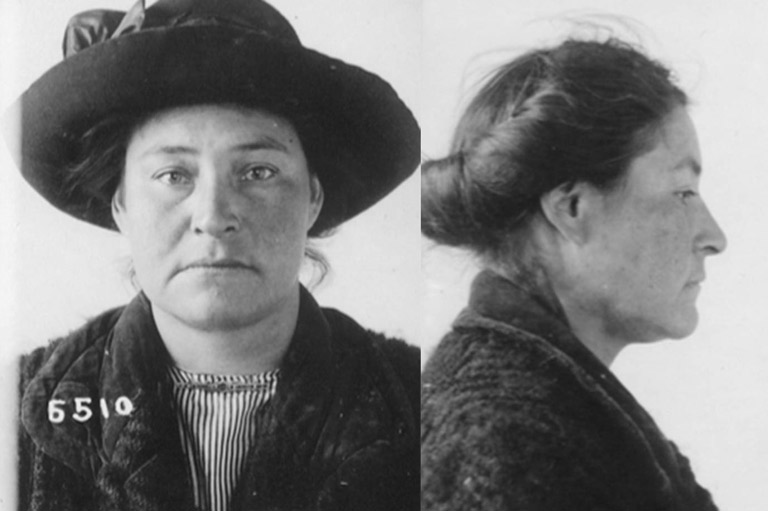Discover a wealth of interesting, entertaining and informative stories in each issue, delivered to you six times per year.
Women on the Force
-
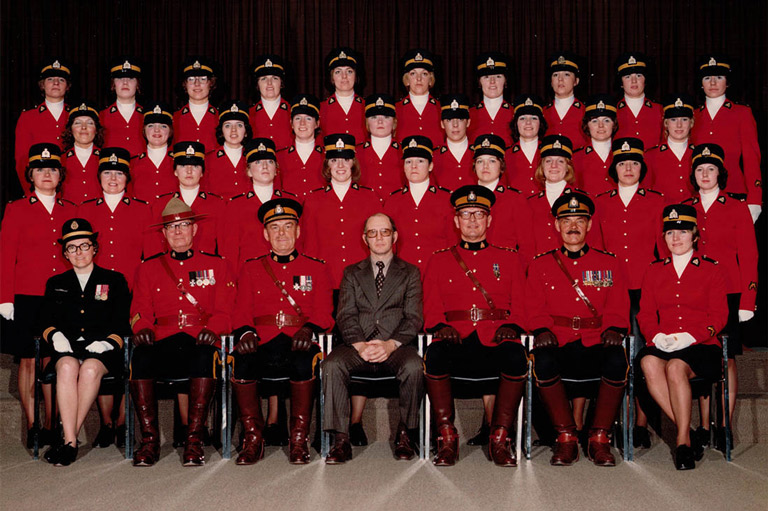 The official group photo of the first cohort of female Mounties, March 3, 1975.Royal Canadian Mounted Police
The official group photo of the first cohort of female Mounties, March 3, 1975.Royal Canadian Mounted Police -
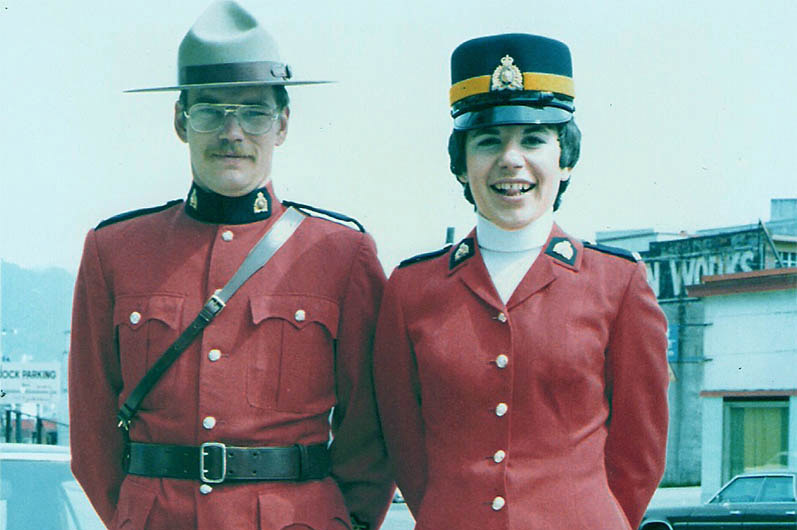 In 1975, Donna Burns became engaged to a fellow Mountie, Ronald Morse. The couple caused headaches for RCMP brass because the force had no policy dealing with marriage between two officers.Donna Morse
In 1975, Donna Burns became engaged to a fellow Mountie, Ronald Morse. The couple caused headaches for RCMP brass because the force had no policy dealing with marriage between two officers.Donna Morse -
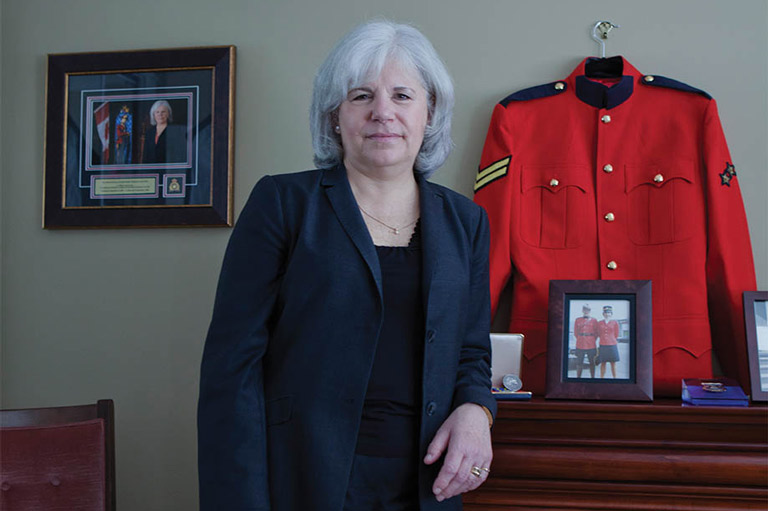 Donna Morse in May 2011 at her home in southwestern British Columbia.Robert Karpa
Donna Morse in May 2011 at her home in southwestern British Columbia.Robert Karpa -
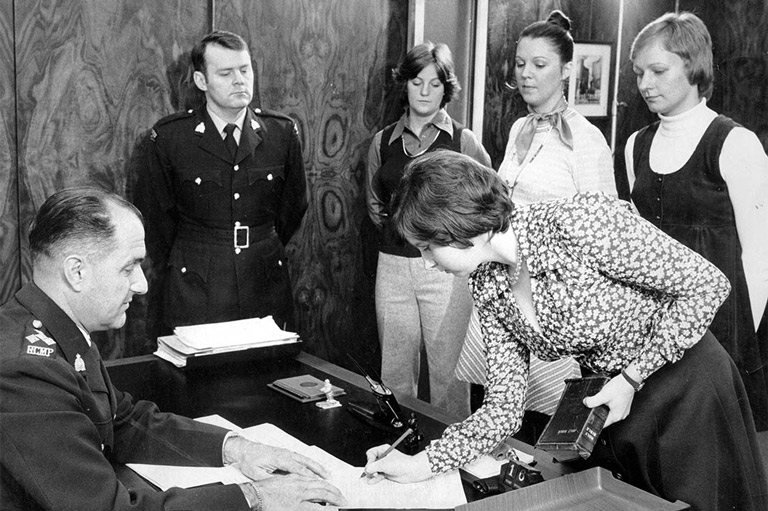 Heather Ann Phyllis registers to become a new RCMP recruit on September 16, 1974.Canadian Press
Heather Ann Phyllis registers to become a new RCMP recruit on September 16, 1974.Canadian Press -
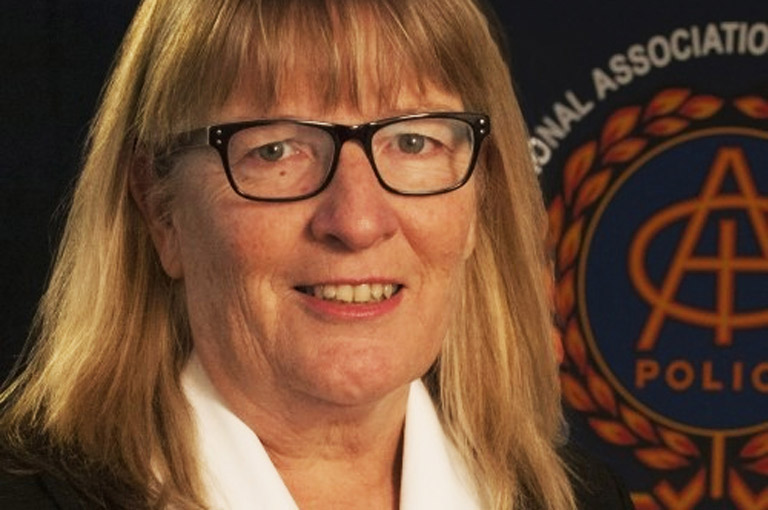 In 1998, Gwen Boniface becomes the first woman commissioner of the Ontario Provincial Police.
In 1998, Gwen Boniface becomes the first woman commissioner of the Ontario Provincial Police. -
 In 2006, Beverley Busson is appointed, on an interim basis, as the RCMP's first female commissioner.Royal Canadian Mounted Police
In 2006, Beverley Busson is appointed, on an interim basis, as the RCMP's first female commissioner.Royal Canadian Mounted Police -
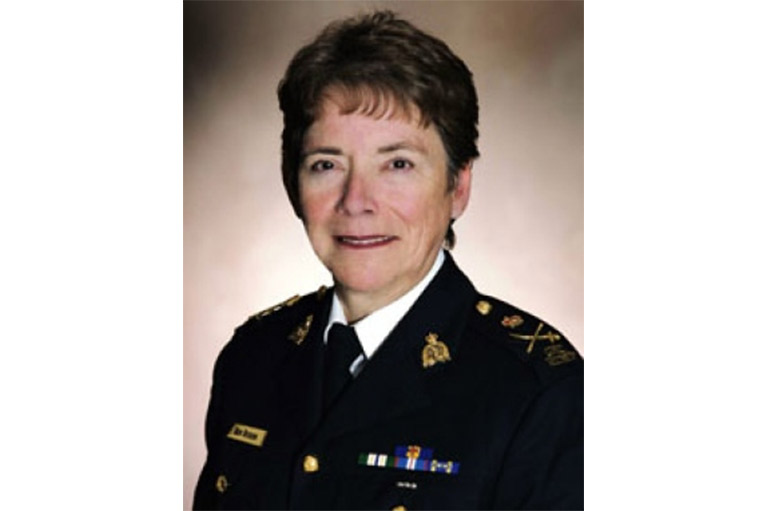 The first female mounties stand for inspection during graduation ceremonies at the RCMP "Depot" Division, Regina Saskatchewan, on March 3, 1975.Ric Hall
The first female mounties stand for inspection during graduation ceremonies at the RCMP "Depot" Division, Regina Saskatchewan, on March 3, 1975.Ric Hall
Donna Burns was twenty-one years old when she arrived at her first Royal Canadian Mounted Police posting in Port Alberni, British Columbia, in March 1975. She was at the detachment for less than two weeks when she responded to a call about a young woman being pushed through a plate glass window at a local business. Burns approached the suspect at a fish and chips shop, where she asked if she could talk to him outside. He refused twice. When she asked him a third time, she touched him lightly on the shoulder, and, as she describes it, he went "berserk."
The suspect jumped up suddenly, threw her over the diner's counter, and proceeded to strangle her. Thinking that the man was trying to kill her, Burns' instincts, heightened by her recent training at the RCMP's academy, took over. She reached up behind the man and yanked his long blond hair so hard that he let her go.
She does not recall how she managed to get him into the back of the police cruiser but does remember that she was unable to get handcuffs on him. She also remembered that none of the patrons in the diner helped her while she was being choked; instead, they watched to see how she was going to handle the situation.
Back at the detachment, it took a number of male officers to get the suspect into a cell. The man, who was well-known to police, was charged with assaulting a police officer and eventually sentenced to two years in prison. Burns recalled the judge commenting, "How dare you assault a member of the RCMP, let alone a female member!"
Stories like this cannot be found in official histories of the RCMP In fact, little is known about the history of women in Canada's iconic police force. As a former police officer myself, I was aware of the valuable history waiting to be told and I conducted interviews with former officers about their experiences as part of research for my Ph.D. dissertation. Burns' story is representative of many of these personal accounts. Her story provides a revealing glimpse into how the presence of women challenged popular conceptions of policing as a male preserve. More broadly, the stories of female Mounties reflect the many ways attitudes toward women were being redefined in Canadian society at the end of the twentieth century.
Most early versions of RCMP history focused on Prime Minister John A. Macdonald, who first envisioned a mounted paramilitary police force to patrol the newly acquired western territories. The force, originally named the NorthWest Mounted Police, was formed in 1873. By the end of the nineteenth century, historians and journalists alike were crediting the NWMP with aiding in the peaceful settlement of the West, with keeping the peace between First Nations peoples and white settlers, and with dismantling the illegal American whisky trade. Commanding officers such as Sam Steele figured prominently in their often highly romanticized stories.
Sign up for any of our newsletters and be eligible to win one of many book prizes available.
It was not until the early decades of the twentieth century that women began to appear in biographies and popular histories about the force. These accounts were usually written by the wives of RCMP officers. They were also known as the "unpaid Mountie" or the "second man."
As these names suggest, Mountie wives functioned as unpaid support staff and kept many small and remote detachments running smoothly, saving the police force significant sums of money However, their work was not officially acknowledged and usually went unnoticed by historians.
The role of women in the force took a dramatic turn in the 1970s. At the beginning of the decade, the Royal Commission on the Status of Women in Canada recommended that "enlistment in the RCMP be open to women."
It would take the force another four years and several studies to act. But in May 1974, the RCMP finally announced that it was recruiting women for the first time in its 101-year history.
When the recruitment announcements started appearing in newspapers, Donna Burns was one of the 292 women who applied. For Burns, there was nothing unusual about a woman in policing. She was raised in Calgary, where women were already employed as officers with the Calgary Police Service. Burns was also disillusioned with her dead-end occupation as a bank teller. The last straw came when the bank hired men with no banking experience as management trainees. She saw that her opportunities for advancement were very limited.
On September 16, 1974, the RCMP accepted Burns and thirty-one other women from across Canada. All were sworn in simultaneously cross the country through coordinated times — a gesture meant to transfer the pressure of being the “first” onto a group of women rather than an individual.
The event was a media sensation. In Toronto, the CBC recorded the ceremony live at the RCMP’s headquarters. Bob Johnstone reported for radio listeners that “the force that always gets its man now has women.”
In Calgary Burns and two other women had to perform the signing three times for photographers waiting to capture the moment. Many of the new female recruits found themselves on newspaper front pages the next day.
One week later, the women began six months of recruit training at the RCMP's academy in Regina. Steeped in history and paramilitary tradition, the academy had changed its training methods very little since its establishment in 1885. It was modelled after the Royal Irish Constabulary's Depot of Instruction. The RIC was the British Empire's largest professional police force and was the inspiration for many colonial policing bodies. Like its counterpart in Dublin, the Regina academy was named Depot.
Commanding officers and instructors at Depot initially wondered if women could meet the academy's strenuous physical requirements, so they modified a few of the training objectives. For instance, male recruits were expected to lift 125 pounds in weights by the time they graduated, while women were limited to thirty-five pounds. Otherwise, the women were expected to meet the same training objectives as male recruits in firearms, self-defence, swimming, drill, and academic studies.
Since it had no experience training women, the RCMP turned to a female officer from the Canadian military for help. Major Doris Toole, who had previously been in charge of female recruit training at Canadian Forces Base Cornwallis, Nova Scotia, was seconded to act as a liaison between the women and the police force, to monitor their training classes, and to provide advice regarding their uniform and kit.
Toole's presence was reassuring to Burns, who arrived at Depot feeling somewhat scared and naive. It was obvious to her that the male instructors "didn't know how to treat us, and we weren't sure what was being expected of us.”
The secondment of Toole was the first and only time the RCMP relied on an outside advisor to assist in training, making her an important figure in RCMP history.
Meanwhile, the intense media attention continued. Reporters received unprecedented access to female recruits during training. The women were interviewed and photographed while jogging, lifting weights, swimming, marching, and learning how to fire revolvers. Even the twenty minutes allotted for their meals turned into a photo op.
The only place the media was not allowed was the dormitory. But even this was circumvented when radio stations started calling the dormitory pay phone and asking for interviews. Most of the women just wanted to fit in with the male recruits, but this was hard to do while under the glare of the media spotlight.
After six months, thirty of the original thirty-two women successfully completed their training. Their graduation ceremony on March 3, 1975, was a memorable event. RCMP commissioner Maurice Nadon and federal Solicitor General Warren Allmand delivered speeches. Five police fathers, including Burns' dad, Staff Sergeant Robert Burns of the Calgary Police Service, presented their daughters with their RCMP identification badges during the ceremony. Allmand later confessed to being "choked up" at witnessing history being made.
One week later, Burns arrived in Port Alberni, a mill town on Vancouver Island, where she quickly became a novelty. "You'd stop the police car at an intersection and people would be walking by and they'd be pointing,” she recalled. A story about her appeared in the local newspaper soon after her arrival, as did an account of her single-handed arrest of the dangerous man in the fish and chips shop.
Everyone in town knew where she lived, including a group of young men engaged in criminal activity who tried to intimidate her. They sat outside her apartment late at night, put sugar in the gas tank of her car, and followed her around while she was on patrol. But she was not easily rattled.
For the most part, Burns remembers her time in Port Alberni as "absolutely fantastic.” She describes her male peers as gentlemen who supported her. Initially, some male officers struggled with whether to protect her as a woman or treat her like a partner. It took some time for Burns to convince them that they should let her do what she was trained to do and for them to understand that women handled situations differently than men.
Rather than using physical force, many female police officers negotiated their way through difficult circumstances. Burns acknowledged that this approach did not always work, as her encounter with the man in the fish and chips shop demonstrated. But she quickly learned that if she took ten minutes longer to resolve a situation through discussion, the outcome was usually more positive.
One of her more rewarding experiences took place during her first summer in Port Alberni, when she assisted male officers investigating the rape of two female tourists. Despite her inexperience, they asked her to be involved when they realized that Burns’s presence brought a degree of comfort to the traumatized women.
In July 1975, Ronald Morse, a young constable also stationed in Port Alberni, asked Burns to marry him — and a new chapter in RCMP history began. The issue of marriage had been a recurring problem for the police force since 1873. RCMP regulations stipulated that junior police officers were prohibited from marrying for their first five years of service. After five years, permission to marry required approval from a commanding officer along with proof of a sufficient sum of money in a savings account to support a wife.
Many secret weddings took place during the course of a century, but violators were immediately dismissed when caught. RCMP officers usually chose to resign to get married, something Burns' father had done in 1950 before joining the Calgary Police Service. Following the hiring of women in 1974, however, the RCMP abolished this policy and permitted married men to join the police force for the first time in its history.
Save as much as 52% off the cover price! 6 issues per year as low as $29.95. Available in print and digital.
But that was as far as the changes went. By the end of 1975, the RCMP still did not have a policy in place regarding marriage between two Mounties. Commanding officers were shocked at the engagement of Burns to Morse and were unsure of what to do. Orders prohibiting officers from living outside the community where they policed, coupled with resistance to the idea of a married couple working at the same detachment, created an immediate problem for upper management.
Nevertheless, Burns and Morse proceeded with their wedding plans and were married in November 1975. The groom wore his red serge uniform; the bride wore a white dress and changed her name. She was now Donna Morse. The first married Mounties were transferred to the greater Vancouver area, where they worked in neighbouring municipalities.
The RCMP was also unprepared for pregnant Mounties.
There were minimal guidelines stipulating that female officers were to be reassigned to office duties at the onset of pregnancy. They were also entitled to six months of maternity leave, the amount given to all female employees working for the federal government in the 1970s. The force held the pregnant officer's position for her until she returned to duty. Since these vacancies resulted in an increased workload for other officers, particularly in small detachments, they became a source of contention.
The issue of how to dress a pregnant Mountie went unresolved for decades. Early designs for an operational maternity uniform did not allow for the wearing of a service revolver. A shoulder holster would have solved the problem, but the RCMP refused to alter its policy prohibiting uniformed officers from wearing them. It was not until 1996 that the police force hired a professional clothing designer who developed a maternity uniform equipped with a side entry for a service revolver.
But these advances came too late for Morse. When she became pregnant with her first child in1980, she chose to hide her pregnancy for five months and remained operational. It was not until she was unable to do up the trousers of her uniform that she informed her supervisor that she was pregnant. Morse, unsure of her rights, was uncertain how her pregnancy would affect her career. It was important to her to continue to pull her own weight as a police officer.
In hindsight, she would do things differently. Some of the incidents she dealt with, such as entering a burning house and attending serious traffic accidents, she now views as far too risky for an unborn child. Nevertheless, Morse counted herself fortunate to have been stationed in larger urban detachments that accommodated each of her pregnancies. She returned to full operational police duties after the birth of each of her three children.
Despite the presence of women, RCMP culture was slow to change. Federal employment equity laws and official RCMP policy did not stop female officers from being targets of harassment. Morse's first encounter with sexual harassment took place when a senior male RCMP officer who accompanied her on a trip made a number of unwanted sexual advances towards her. She says that when they returned from the trip, he intimidated her into keeping quiet about what had happened. She confided only in her husband. Her experience was not unusual. Many female officers resigned as a result of being harassed on the job. These resignations contributed to high attrition rates for female Mounties.
By its nature, police work takes a psychological and emotional toll on officers, whether they are men or women. As new understandings about post-traumatic stress disorder (PTSD) emerge, historians are revising their approach to historical events. Recent studies on shell shock in the First World War, for example, have increased our understanding of soldiers' responses to the horrors of war. Similarly, incidents of PTSD among RCMP officers increase our understanding of the history of policing in Canada.
During the 1970s, emotional responses were often associated with femininity and were considered a sign of weakness. Mounties were supposed to remain professional, which was usually interpreted to mean masculine, rational, and dispassionate in the face of trauma.
As a result, many female Mounties struggled with the emotional aftermath of traumatic events. In November 1982, while on patrol, Morse responded to a call about a serious traffic accident — a drunk driver had hit a vehicle head-on. As she approached a crumpled vehicle in a nearby ditch, two male bystanders tried to prevent her from going further. She shook them off, moved closer, and then realized that the mangled car was a police cruiser — and her partner was inside the wreckage.
Despite the horrific circumstances, Morse calmly took control of the accident scene until help arrived. Afterwards, she and all the other members at the detachment struggled to cope with the near death of their seriously injured co-worker, who remained in hospital for weeks. Morse recalled that “in those years you didn't talk” about emotional stress, and the RCMP did not provide trauma counselling.
Three weeks later, Morse was driving her police cruiser when she began to lose her eyesight and muscle control. She pulled over to the side of the road and radioed in to the detachment for help. At the hospital, doctors diagnosed her condition as possibly multiple sclerosis or an epileptic seizure. Morse completely lost her eyesight and the use of her muscles. She also lost her driver's licence and was placed on medical leave.
It was a number of weeks before her eyesight returned. She eventually regained the use of her muscles, and she returned to active duty, two months after the accident, on December 31, albeit while still under her doctor's care.
Today we understand her condition as PTSD, a response to the emotional trauma of the motor vehicle accident. The misdiagnosis had an impact on her personal life. Morse delayed having a second child based on her doctor's advice that a pregnancy could trigger a return of the symptoms. The horrific traffic accident, and the ensuing trauma it produced, remains a powerful memory for Morse.
She retired from the RCMP in 1995 after twenty-one years of service. Her husband Ronald retired in 1994; her children are now young adults. Today, Morse works as a director of corporate security for a branch of the provincial government in British Columbia.
Few would argue against the idea that women have made significant contributions to the history of the RCMP. Since 1974, women have distinguished themselves as members of the force. Some have received recognition for their bravery and courage. Others have been gravely injured while serving their communities. Four women have lost their lives in the line of duty.
Today, most Canadians assume that women are capable of doing police work. A female Mountie is not an unusual sight — they've come a long way since 1974. Indeed, the personal histories of female RCMP officers like Donna Morse illustrate just how far women have journeyed.
Timeline: Women in Canadian Police Work
Early 1800s
Rose Fortune, a Black Loyalist born into slavery, becomes the first woman in Canada known to have taken on police duties. The successful entrepreneur imposes and enforces curfews at the wharf at Annapolis Royal, Nova Scotia.
1887
A Mrs. Whiddon becomes Toronto’s first police matron. Her duties are limited to searching arrested women and attending to them as they waited for their court appearances.
1912
Lurancy Harris and Minnie Miller of Vancouver and Annie Jackson of Edmonton are the first women to be hired as police officers. Harris and Miller patrol dance halls, beer parlours, parks, and any “areas of amusement” where women might get into trouble. Jackson’s duties involve women engaged in prostitution.
1933
Women become an integral part of the Toronto police morality bureau. They are involved in undercover investigations.
1974
In Toronto, women officers are assigned to patrols with men. For the first time, the women officers
1975
Thirty-two women take up duties as the RCMP’s first female officers.
1994
Lenna Bradburn becomes Canada’s first female chief of police, serving as head of the municipal police service in Guelph, Ontario.
1998
Gwen Boniface becomes the first woman commissioner of the Ontario Provincial Police.
2006
Beverley Busson is appointed, on an interim basis, as the RCMP’s first female commissioner.
2016
Over twenty-one percent of all police officers in Canada are women.
2018
Brenda Lucki is appointed as RCMP commissioner, becoming Canada's first permanent female RCMP commissioner.
If you believe that stories of women's history should be more widely known, help us do more.
Your donation of $10, $25, or whatever amount you like, will allow Canada’s History to share women’s stories with readers of all ages, ensuring the widest possible audience can access these stories for free.
Any amount helps, or better yet, start a monthly donation today. Your support makes all the difference. Thank you!
Themes associated with this article
You might also like...

Canada’s History Archive, featuring The Beaver, is now available for your browsing and searching pleasure!


